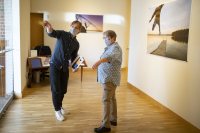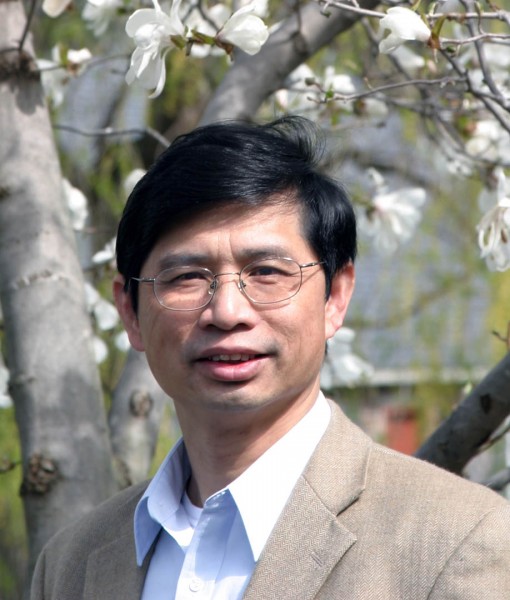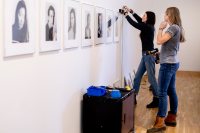
Fulbright to support research in Vietnam for art professor
Trian Nguyen, assistant professor of art and Luce Junior Professor of Asian Studies at Bates, has received a $28,000 Fulbright Award to support a year of research and writing that will include a six-month stay in Vietnam.
During his Fulbright year, which begins this month, Nguyen will advance his study of Vietnamese portrait sculptures from the 15th through the 18th centuries. Used as devotional and commemorative objects, the sculptures depict people from all walks of life — legendary and historical figures, folk heroes, local clergy, nobility, warriors and even patrons of the arts securing themselves a place in posterity.
“These are very rich materials,” says Nguyen, who came to the United States from his native Vietnam in 1981 and is one of the few art historians of any nationality studying the portrait statues. “They reflect religious and festival practices and a critical period of history — there are many layers of information in each image.
“The sculptured objects are almost alive themselves — many of them are life-size images, and each image of this sculpture has its own life story,” he says.
In Vietnam, Nguyen will perform documentary research, consult with other scholars and do field work including on-site documentation of the statues and observing community festivals in which they play a central role. Back in the States, he will finish a book on the sculptures.
Vietnamese scholars have studied the sculptures from the standpoints of archaeology, folklore or pure history, but not art history, says Nguyen — despite their considerable artistic worth. He will be one of the first scholars to subject the works to a modern Western interpretation.
The statues were often made to honor local notables, and are typically accompanied by stelae — capsule biographies in carved inscriptions. Buddhist monks, figures from legend and members of the nobility are depicted. So too are people who, with no male descendants to honor their memories, bestowed the temple with large sums of money in exchange for statues that would serve as the centerpiece of a commemorative ceremony. Women were frequently among such patrons.
The statues are typically made of carved stone, terra cotta or lacquered wood. The need for their comprehensive study is urgent. Weather, colonial domination, war and social upheaval have all taken their toll in damage to or destruction of these artworks, and poor restoration work is diminishing the significance of many remaining works.
Nguyen hopes to work with art conservators to improve restoration practices. More broadly, he hopes that his research will inspire a new interdisciplinary interest in Vietnamese art in his native country as well as abroad. The value of local sculptures is understood at the local level in Vietnam, he says, but “they never have a national awareness of the whole system going back to the 12th or 13th century.”
Now 44, Nguyen holds a doctorate in Asian art history from the University of California at Berkeley, and obtained his master’s in theological studies at Harvard Divinity School. He came to Bates in 2000, and as the first faculty member in Asian art history has taught across a wide range of topics, created an extensive slide collection and guided the expansion of relevant library holdings.
The Fulbright Program is the U.S. government’s flagship program in international educational exchange, named for the man who proposed it, Arkansas Sen. J. William Fulbright. In the aftermath of World War II, Fulbright viewed the proposed program as a much-needed vehicle for promoting “mutual understanding between the people of the United States and the people of other countries of the world.”





